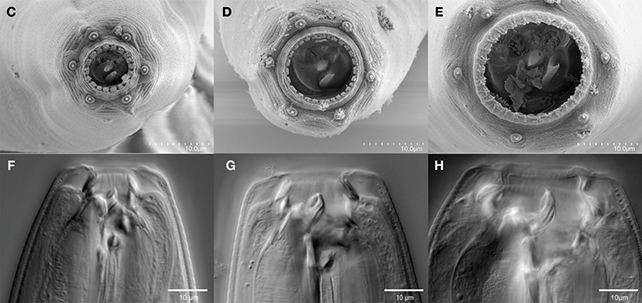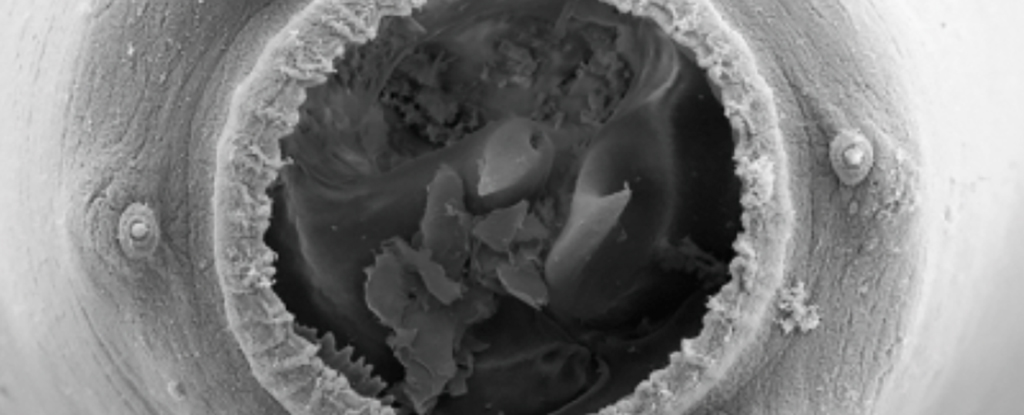Products You May Like
Something rather monstrous happens to the nematode Allodiplogaster sudhausi when reduced to snacking on boring old fungus. Scientists have discovered it develops a giant mouth and feasts on other worms, including those from its own family.
This new form has been named the teratostomatous morph, with “teras” being an ancient Greek word for monster. Two other mouth formations have been previously described in this type of worm, making this shape-shift number three.
The team behind the research, from the Max Planck Institute for Developmental Biology in Germany, Indiana University in the US, and the Forestry and Forest Products Research Institute in Japan, thinks the huge mouth could be a reaction to stress.

Other nematodes (or roundworms) have been shown to develop mouths and eat each other when given certain diets, which prompted the study into A. sudhausi to get a closer look at this fascinating and slightly scary process.
“To observe potential changes in mouth-form plasticity of A. sudhausi, we cultured these worms on a collection of bacterial, fungal and nematode diets,” the researchers write in their paper.
“Remarkably, we found three distinct adult mouth-forms when A. sudhausi was grown on Escherichia coli OP50 bacteria, C. elegans N2 worms, and Penicillium camemberti fungi.”
Using genetic analysis, the researchers were able to confirm this morphing ability is linked to the worm having a second complete copy of its entire genome, something known as whole genome duplication. The extra copies of genes give the nematode the extra flexibility to transform itself.
The team zoomed in on one particular gene and its copy, Asu-sul-2-A/B, determining that these sequences controlled the formation of the different mouths – including the newly discovered third one.
While further study is going to be needed to figure out how and why A. sudhausi goes into cannibal mode, the researchers think that it’s a stress response to overcrowding and starvation. Opening up wide and indiscriminately snacking on anything would give the worm an advantage in crowded environments or when food is scarce.
Being able to adapt to changing conditions and environments – technically referred to as developmental plasticity in this study – is clearly crucial for animals wanting to get ahead, and for new transformations being possible.
“In summary, the discovery of an additional mouth morph associated with cannibalistic behavior supports the importance of developmental plasticity as a major driver of morphological and behavioral diversification,” write the researchers.
The research hasn’t yet been peer reviewed but can be found on the preprint server bioRxiv.
